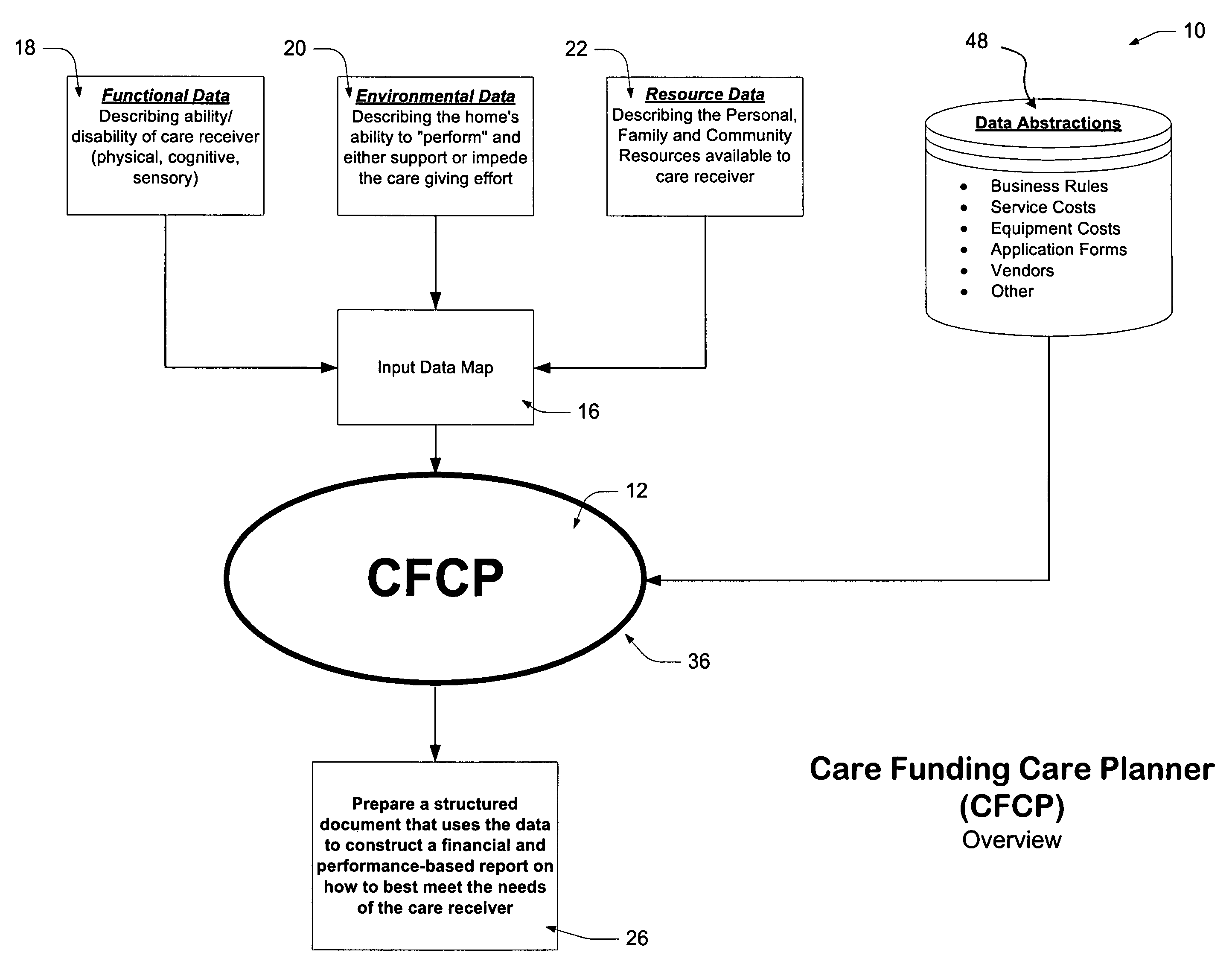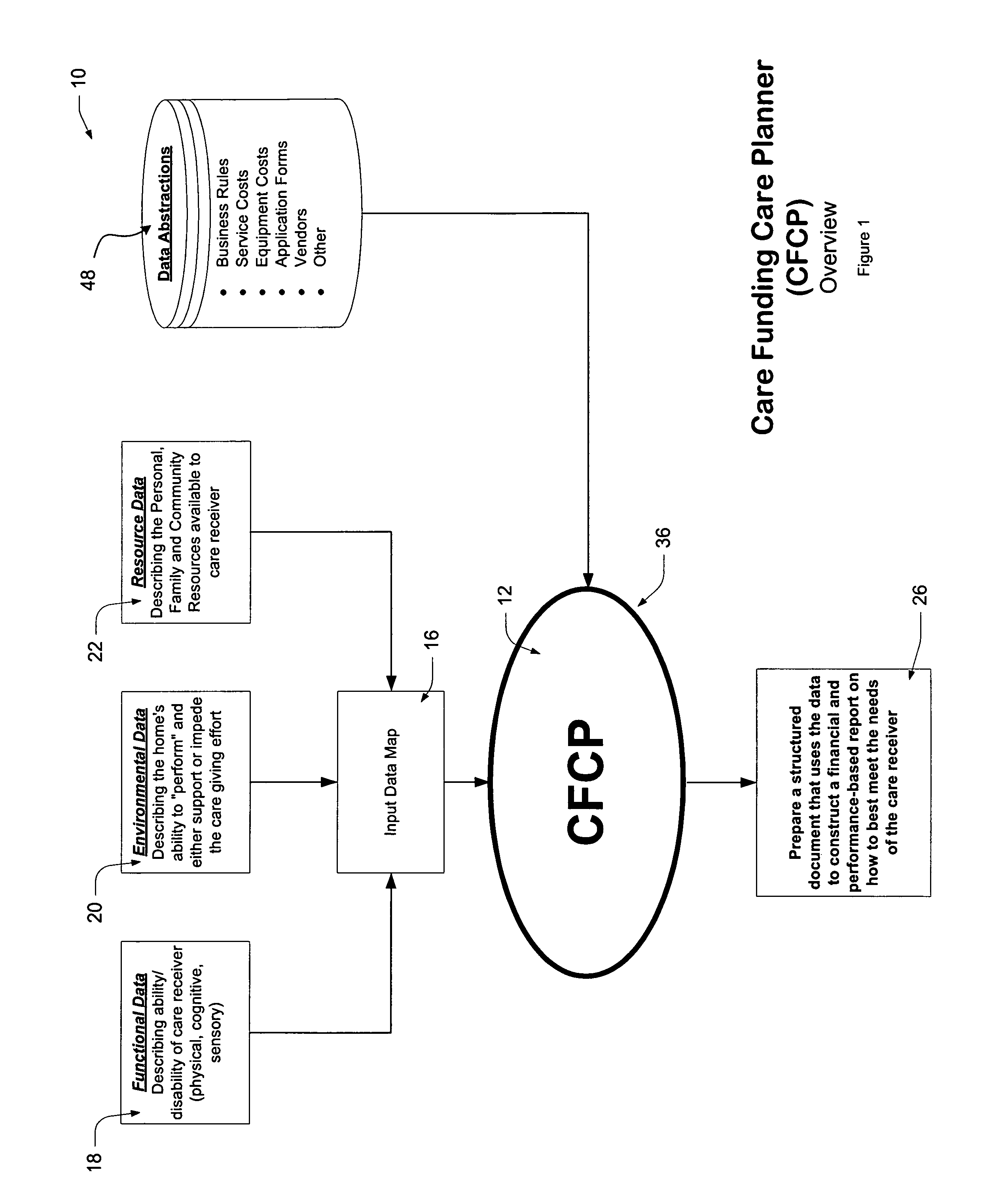Care funding and care planning system
a care funding and care planning technology, applied in the field of care funding and care planning system, can solve the problems of physical or cognitively disabled, difficult-to-negotiate patchwork of social service and disability-care services with multiple points of entry, reactive care system, etc., and achieve the effect of overcompensating the disadvantages
- Summary
- Abstract
- Description
- Claims
- Application Information
AI Technical Summary
Benefits of technology
Problems solved by technology
Method used
Image
Examples
example a
End of Example A
[0142]EXAMPLE B below illustrates a sample of tables only from the care funding and care plan options report 192 that is generated by the CFCP information exchange system 10. Text narratives of demographic variables, long-term care costs, care options, functional status and clinical variables, resource variables, family advisories, community resource eligibility rules, client community resource access planning steps, home modification recommendations, technology support options, and vendor referrals are summarized in the full report in EXAMPLE A above.
Start of Example B
Careplan Options Report
Re: Care Planning for Bernice
Date: Feb. 24, 2007
Bernice's Care Resources
[0143]
Est. MonthlyResourceDescriptionCare ResourceFixed Income 2200 p / mo $140 (Income Less(Couple)Fixed IncomeExpenses)Assets$59,000 available $245.83(@5% P / Mo)*liquid assetsLong-Term NONE00 Care InsuranceHome Equity$200,000 in home equity$940 (Rev. Mtg.)*FamilySpouse; 2 Dtrs. - Hours$3360 (In-Kind Svcs)A...
example b
End of Example B
[0155]The current CFCP system 10 invention utilizes the system processor means 36 including the above described knowledge-management software 36 to achieve improvements needed to overcome the problems created by the present non-standardized process of long-term care funding and care planning. Primary improvements include:
[0156]1. Eliminating inconsistencies in assessment protocols by providing case managers, social workers, legal professionals, financial professionals, health insurers, pension administrators and other advocates and agents of influence a standardized, downloadable checklist and interview format to complete for CFCP processing;
[0157]2. Eliminating inconsistencies in assessment protocols by providing case managers, social workers, legal professionals, financial professionals, health insurers, pension administrators and other advocates and agents of influence the standardized software integrated data map 16 to complete for CFCP processing;
[0158]3. Elimin...
PUM
 Login to View More
Login to View More Abstract
Description
Claims
Application Information
 Login to View More
Login to View More - R&D
- Intellectual Property
- Life Sciences
- Materials
- Tech Scout
- Unparalleled Data Quality
- Higher Quality Content
- 60% Fewer Hallucinations
Browse by: Latest US Patents, China's latest patents, Technical Efficacy Thesaurus, Application Domain, Technology Topic, Popular Technical Reports.
© 2025 PatSnap. All rights reserved.Legal|Privacy policy|Modern Slavery Act Transparency Statement|Sitemap|About US| Contact US: help@patsnap.com



